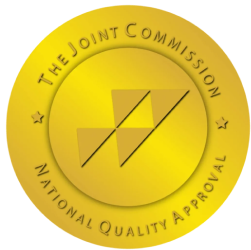Methamphetamine is a synthetic stimulant that affects the central nervous system. It’s known for producing:
• Intense euphoria
• Increased energy and alertness
• Enhanced focus and concentration
While it has limited medical use for conditions like ADHD and narcolepsy, methamphetamine is primarily abused recreationally, leading to severe health risks and addiction.
Absorption
Methamphetamine enters the bloodstream rapidly, with the method of ingestion playing a crucial role in its absorption rate:
• Smoking or injecting: Effects are almost immediate
• Snorting: Effects begin within 3-5 minutes
• Oral ingestion: Effects start within 15-20 minutes
Metabolism
The liver is primarily responsible for metabolizing methamphetamine. During this process:
• Methamphetamine is converted into amphetamine, which is also psychoactive
• Other metabolites are produced, some of which can be detected in drug tests
Excretion
Methamphetamine and its metabolites are primarily excreted through urine. Interestingly:
• Up to 50% of the drug can be excreted unchanged
• The rate of excretion can vary based on urine pH, with more acidic urine leading to faster elimination
The detection window for methamphetamine varies depending on the type of test used and individual factors.
Urine Testing
Urine tests are the most common method for detecting methamphetamine use.
• Short-term use: Detectable for 1-4 days after last use
• Chronic use: May be detectable for up to 7 days or longer
Blood Testing
Blood tests offer a shorter detection window but can provide more accurate information about recent use.
• Typically detects methamphetamine for 1-3 days post-use
• Most effective within 12-24 hours of last use
Saliva Testing
While less common, saliva tests can detect recent methamphetamine use.
• Detection window: Up to 1-2 days after use
• Results can be variable due to factors like oral pH and hydration
Hair Testing
Hair follicle tests provide the longest detection window for methamphetamine use.
• Can detect use for up to 90 days
• Reflects long-term exposure rather than recent use
• May not detect very recent use (within the last 7-10 days)
Several factors influence how long methamphetamine remains detectable in the body:
Usage Patterns
• Frequency of use: Regular users may have longer detection times
• Binge use: Can lead to extended periods of detectability
Dosage
• Higher doses typically result in longer detection windows
• Purity of the drug can affect metabolism and excretion rates
• Metabolism rate: Faster metabolisms may clear the drug more quickly
• Age and liver health: Older individuals or those with liver issues may process the drug more slowly
• Hydration levels: Well-hydrated individuals may excrete the drug faster
• Body composition: Factors like body mass and fat content can affect drug retention
Methamphetamine is commonly included in standard drug panels, but there are some considerations:
• Standard drug tests: Usually detect methamphetamine under the amphetamine category
• Specialized tests: Can distinguish between methamphetamine and other amphetamines
• False positives: May occur due to certain medications or dietary supplements
It’s important to note that some prescription medications can cause false positives for methamphetamine, highlighting the need for confirmatory testing in some cases.
The duration of a methamphetamine high can vary based on several factors:
• Typical duration: 6-12 hours
• Peak effects: Usually occur 2-4 hours after use
Factors affecting the intensity and duration of the high include:
• Dosage: Higher doses generally lead to longer-lasting effects
• Method of use: Smoking or injecting typically produces more intense but shorter-lasting highs compared to oral ingestion
• Individual tolerance: Regular users may experience diminished effects over time
• Body chemistry: Individual variations can affect how the drug is processed and experienced
Understanding how long methamphetamine stays in the system is crucial for various reasons, from health concerns to legal implications. While detection times can vary widely based on individual factors and testing methods, it’s clear that methamphetamine can remain detectable for several days after use, with some tests capable of identifying long-term use patterns.
It’s important to emphasize that methamphetamine use carries significant risks, including severe addiction and long-term health consequences. The prolonged presence of the drug in the body underscores its potential for harm and the importance of seeking professional help for those struggling with methamphetamine addiction.
If methamphetamine use is impacting your life or the life of someone you care about, Asana Recovery offers comprehensive, evidence-based treatment in a compassionate environment. Contact us today to start your journey to recovery and a healthier, drug-free future.

This book has helped so many men and women; and we want to give it you for FREE. Get signed up today and discover how to unlock the grip of addiction and get back to living your best life.
In this book, you’ll discover…
— The Most Common Misconceptions About Addiction and Rehab
— Why Rock Bottom is a Myth and What You Can Do About It
–The Steps to Healing From Trauma, Both Mentally and Emotionally
–And much more!

Asana Recovery is licensed and certified by the State Department of Health Care Services.


© Copyright 2024 Asana Recovery™ | All Rights Reserved | Privacy Policy
Asana Recovery
We firmly believe that the internet should be available and accessible to anyone, and are committed to providing a website that is accessible to the widest possible audience, regardless of circumstance and ability.
To fulfill this, we aim to adhere as strictly as possible to the World Wide Web Consortium’s (W3C) Web Content Accessibility Guidelines 2.1 (WCAG 2.1) at the AA level. These guidelines explain how to make web content accessible to people with a wide array of disabilities. Complying with those guidelines helps us ensure that the website is accessible to all people: blind people, people with motor impairments, visual impairment, cognitive disabilities, and more.
This website utilizes various technologies that are meant to make it as accessible as possible at all times. We utilize an accessibility interface that allows persons with specific disabilities to adjust the website’s UI (user interface) and design it to their personal needs.
Additionally, the website utilizes an AI-based application that runs in the background and optimizes its accessibility level constantly. This application remediates the website’s HTML, adapts Its functionality and behavior for screen-readers used by the blind users, and for keyboard functions used by individuals with motor impairments.
If you’ve found a malfunction or have ideas for improvement, we’ll be happy to hear from you. You can reach out to the website’s operators by using the following email
Our website implements the ARIA attributes (Accessible Rich Internet Applications) technique, alongside various different behavioral changes, to ensure blind users visiting with screen-readers are able to read, comprehend, and enjoy the website’s functions. As soon as a user with a screen-reader enters your site, they immediately receive a prompt to enter the Screen-Reader Profile so they can browse and operate your site effectively. Here’s how our website covers some of the most important screen-reader requirements, alongside console screenshots of code examples:
Screen-reader optimization: we run a background process that learns the website’s components from top to bottom, to ensure ongoing compliance even when updating the website. In this process, we provide screen-readers with meaningful data using the ARIA set of attributes. For example, we provide accurate form labels; descriptions for actionable icons (social media icons, search icons, cart icons, etc.); validation guidance for form inputs; element roles such as buttons, menus, modal dialogues (popups), and others. Additionally, the background process scans all the website’s images and provides an accurate and meaningful image-object-recognition-based description as an ALT (alternate text) tag for images that are not described. It will also extract texts that are embedded within the image, using an OCR (optical character recognition) technology. To turn on screen-reader adjustments at any time, users need only to press the Alt+1 keyboard combination. Screen-reader users also get automatic announcements to turn the Screen-reader mode on as soon as they enter the website.
These adjustments are compatible with all popular screen readers, including JAWS and NVDA.
Keyboard navigation optimization: The background process also adjusts the website’s HTML, and adds various behaviors using JavaScript code to make the website operable by the keyboard. This includes the ability to navigate the website using the Tab and Shift+Tab keys, operate dropdowns with the arrow keys, close them with Esc, trigger buttons and links using the Enter key, navigate between radio and checkbox elements using the arrow keys, and fill them in with the Spacebar or Enter key.Additionally, keyboard users will find quick-navigation and content-skip menus, available at any time by clicking Alt+1, or as the first elements of the site while navigating with the keyboard. The background process also handles triggered popups by moving the keyboard focus towards them as soon as they appear, and not allow the focus drift outside it.
Users can also use shortcuts such as “M” (menus), “H” (headings), “F” (forms), “B” (buttons), and “G” (graphics) to jump to specific elements.
We aim to support the widest array of browsers and assistive technologies as possible, so our users can choose the best fitting tools for them, with as few limitations as possible. Therefore, we have worked very hard to be able to support all major systems that comprise over 95% of the user market share including Google Chrome, Mozilla Firefox, Apple Safari, Opera and Microsoft Edge, JAWS and NVDA (screen readers).
Despite our very best efforts to allow anybody to adjust the website to their needs. There may still be pages or sections that are not fully accessible, are in the process of becoming accessible, or are lacking an adequate technological solution to make them accessible. Still, we are continually improving our accessibility, adding, updating and improving its options and features, and developing and adopting new technologies. All this is meant to reach the optimal level of accessibility, following technological advancements. For any assistance, please reach out to